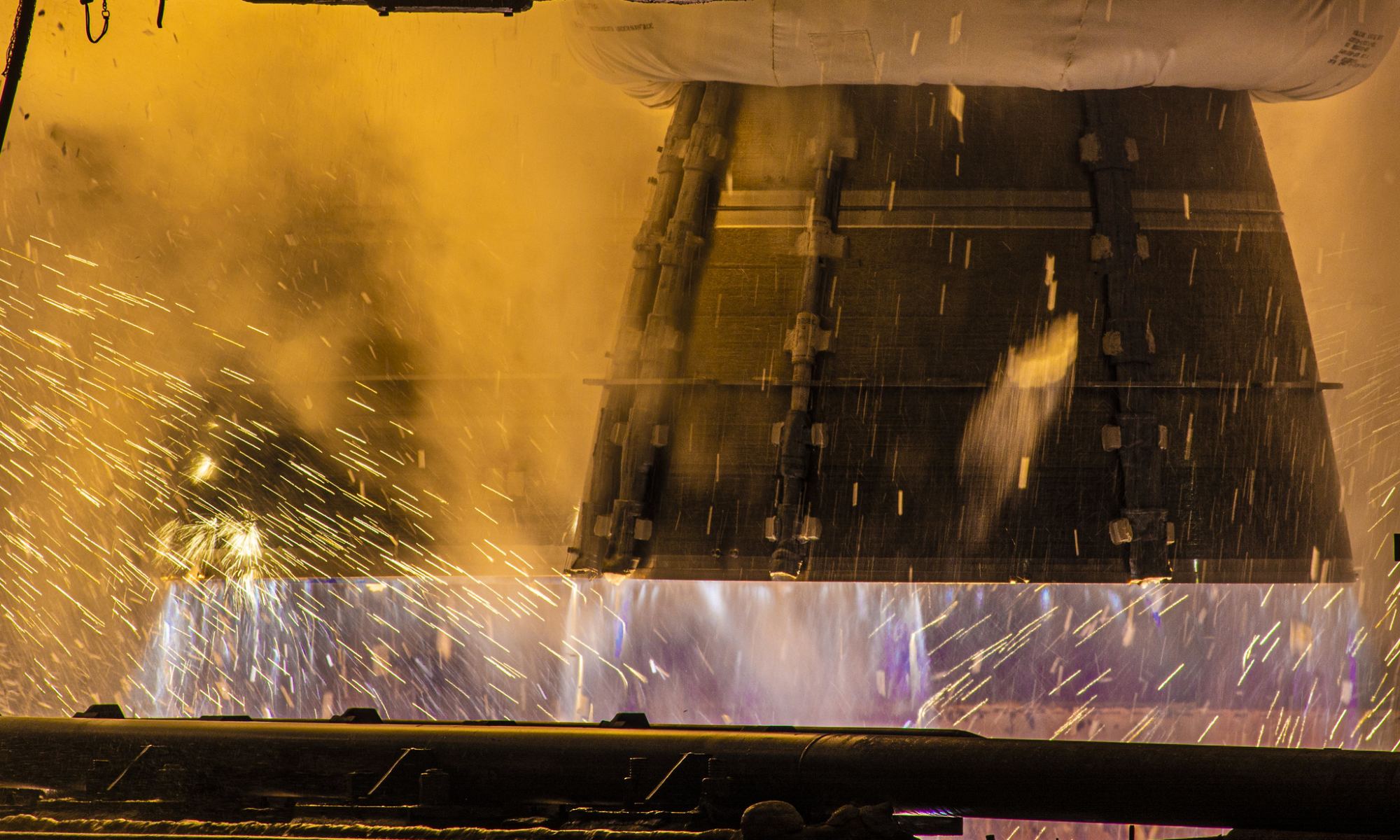United Launch Alliance (ULA) is the oldest commercial space company in the U.S., with over 150 consecutive launches to its credit. For almost two decades, the company has been providing launch services using the expendable Delta II, Delta IV, and Atlas V rockets. Faced with growing competition and political pressure, ULA began working on a new heavy-launch vehicle, the Vulcan rocket, in 2014. Once realized, this rocket will allow the ULA to remain competitive in the burgeoning NewSpace market and meet the needs of the National Security Space Launch (NSSL).
On June 7th, the first stage of the Vulcan successfully test-fired its two Blue Origin BE-4 engines at Space Launch Complex 41 (SLC-41) at the Cape Canaveral Space Force Station (CCSFS) in Florida. The success of this test, designated Certification-1 (Cert-1), places the ULA on track to launch test its next-generation heavy-launch vehicle. Once realized, the Vulcan rocket will provide services ranging from the deployment of small satellites and payloads to reusable crewed spacecraft, like Boeing’s CST-100 Starliner space capsule and Sierra Nevada’s Dream Chaser spaceplane.
The Flight Readiness Firing (FRF) was part of a live broadcast that began at 06:45 pm EDT (03:45 pm PDT) and was completed about two and a half hours later (09:05 pm EDT; 06:05 pm PDT). As you can see from the full-length video seen above (starting at 03:05:39), the ground control team gives the signal (“Go FRF”), which is followed by the fire suppression system turning on and spraying water beneath the engine nozzles. At 03:05:47, the BE-4 engines ignite, throttle up, and burn for about eight seconds before powering down.
The ULA and company CEO Tony Bruno announced success the next day via Twitter, posting pictures and videos of the engine firing. “United Launch Alliance successfully conducted a booster engine flight readiness firing (FRF) at Cape Canaveral Space Force Station, Florida. The engine start sequence began at T-4.88 seconds, the engines throttled up to the target level for two seconds and then powered down,” they wrote in one tweet, later adding: “As one of the most dynamic ground tests performed at the launch site, the FRF provided a integrated check of the rocket, pad systems and launch team.”
Once Vulcan is commercially-available, it will consist of two stages with four standard configurations, consisting of zero, two, four, and six GEM-63XL solid rocket boosters (SRBs). While the first stage will rely on the two BE-4 engines capable of generating a maximum of 249,500 kg (550,000 lbs) of thrust – or 2,447.5 kilonewtons (kN) – using a combination of Liquefied Natural Gas (LNG)/Liquid Oxygen (LO2). The second stage consists of ULA’s new Centaur V upper-stage vehicle powered by two Aerojet Rocketdyne RL-10 engines.
The ULA has also indicated on several occasions that they intend to upgrade the rocket to make it at least “partially reusable.” This includes plans to make the first-stage BE-4 engines detachable and retrievable using parachutes. Another proposal, designated Sensible Modular Autonomous Return Technology (SMART), is to fabricate the first-stage engines, avionics, and thrust structure as a single module. This would be equipped with an inflatable heat shield system and parachutes, allowing the first stage to reenter the atmosphere and be retrieved in mid-air.

The completion of Cert-1 brings ULA a step closer to Vulcan‘s inaugural flight, which is expected to take place by July. The ULA is actively modernizing its infrastructure in preparation for the Vulcan-Centaur‘s introduction. This includes modifying their factory in Decatur, Alabama, to commence large-scale production of the rocket and its various components. They are also upgrading their launch facilities at SLC-41, which will be the first dual-use launch pad servicing the Atlas V and Vulcan rocket families.
More images of the certification test are available on the company’s Flickr page.
Further Reading: ULA

